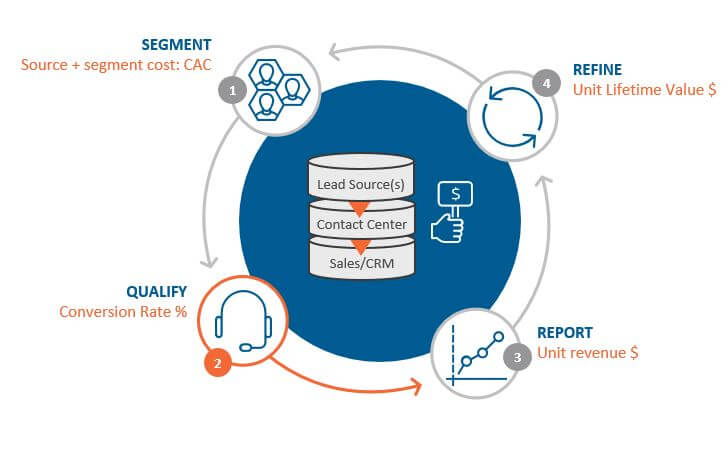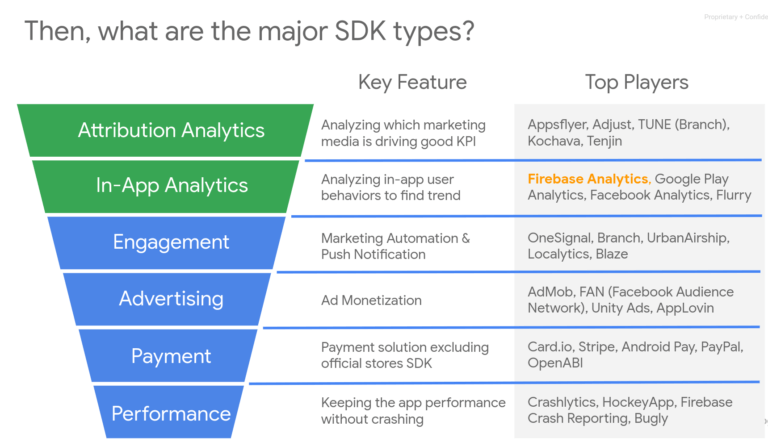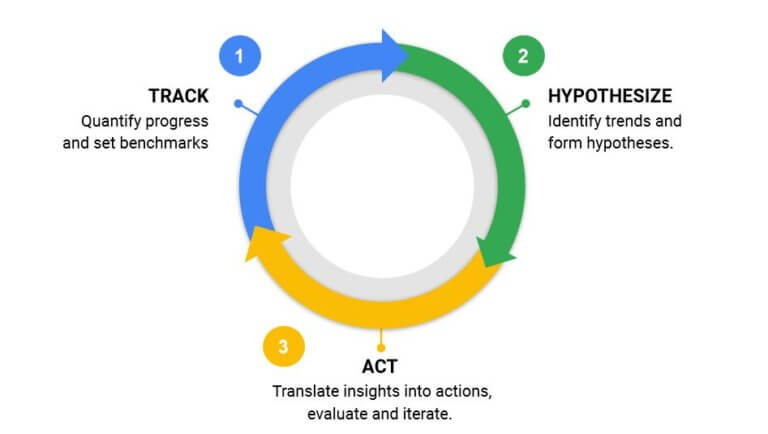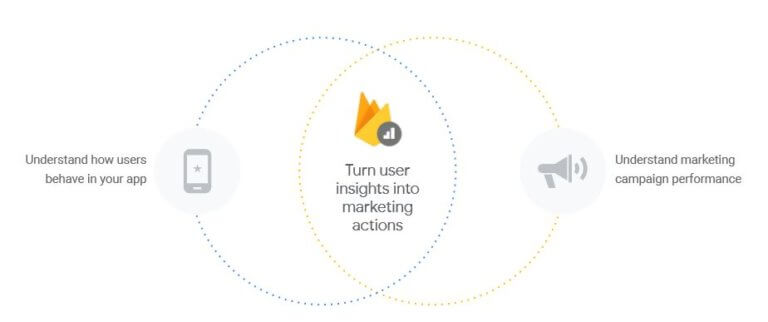Using the Phone to Capture New Opportunities: Watch the Webinar
Here at LQ Digital, we’re big fans of the phone. We’ve seen first hand how the use of a contact center can help scale businesses and capture new opportunities that otherwise would’ve fallen through the cracks. During the Coronavirus pandemic, we’ve found this to be even more true.
While some industries may be struggling, others are finding that they are getting an influx of consumer requests to take advantage of lower interest rates or other opportunities. Other industries are finding that customer requests for contact are going through the roof. So how can industries capitalize on the growing demand and need for personalized communication – especially when they have limited resources and don’t know if the demand will require long-term and permanent staffing changes?
We interviewed Doug Johnson, VP and General Manager of our contact centers here at LQ Digital to uncover how industries can strike that necessary balance and how the use of the phone and contact centers can help to set expectations and capture new opportunities during such a critical time.
Take just 15 minutes to watch our webinar for key findings and takeaways, such as:
- Don’t send your sales people to chase every lead you have, you’ll squander resources and lose opportunities.
- Look for ways to create bandwidth by looking internally at your resources and/or look to 3rd party providers for a contact center to triage requests and qualify customers.
- Provide clear expectations – communicate with customers that they are valuable and while you may not have a sales person available to speak to them now, let them know when they will reach out. Also consider appointment setting.
- Use of a contact center can provide enormous resources – tie your data and your contact center findings together to uncover new opportunities and define where your marketing dollars should be spent.

At LQ Digital, we’ve captured a lot of data over the last 15 years on what scores as best-in-class digital performance (search, social, affiliate). At this time we want to contribute by sharing our data, knowledge and expertise to help your company survive this turbulent time and provide relief.
Remember to subscribe to our webinar series so you always have the latest news and insight in your inbox: subscribe here.
Marketing Your App: Connecting Your Systems for the Data Advantage
App marketers face unique challenges when growing their business but they all share a common goal: to find, acquire and retain quality users in today’s crowded app space. When we talk to growth marketers, there are 2 primary areas of focus in the app business or hybrid app & web business space:
- To find and attract new users to download the app
- To keep those that downloaded the app engaged with the brand & coming back for more
Often marketers look at these as two separate challenges and strategies, but we think the problem is one in the same. If you want repeat customers that will continue to engage with your brand (and repeatedly return to the app), wouldn’t it make sense to target those users in the first place? By targeting customer segments that the data already shows to be more prone to higher usage and loyalty, marketers can save money, time and plenty of headaches.
Intuitively, marketers know this. However, a lot of app marketers focus predominantly on CRM marketing campaigns leveraging their own in-app data and analytics. For example, at this year’s Mobile Growth Summit in San Francisco, multiple presentations centered around retargeting best-practices to incentivize users that initially downloaded an app to continually return and engage with the app long-term.
Tracking app user behaviors that drive usage and retention is clearly important. However, focusing only on in-app data misses the larger opportunity to connect in-app and CRM “profitability-signal” data to customer segmentation, behavioral, demographic, and mobile app / web campaign data captured outside of the app and across different marketing platforms and digital channels. Plus, your highest-revenue customers don’t live in one channel or on one platform – so unless you have a strategy for capturing that data – you are missing out on crucial cross-channel behaviors that could clue you into where to find your best customers in the first place.
By connecting data from the top of the marketing funnel to data from every conversion step (post download) down to revenue, marketers can uncover what audience attributes they should target because their own data shows they highly correlate to customers who turn into long-term revenue generators. This is difficult to do. One of the reasons why is that it often requires managing and combining multiple tools and products – that quickly becomes overwhelming. Internal digital media specialists might know how to work with Facebook, Google Apple, etc. to kick off marketing campaigns for new app downloads. And at the surface level, it can seem easy. Afterall, Google and Facebook use AI to automate much of the traditional media campaign targeting options (e.g. building, etc.). But, is your team well equipped or experienced enough to access down-funnel app or CRM data? That data can be crucial to building hyper-targeted audience strategies that drive not just downloads but trials, registrations, account funding, in-app purchases, 1st-rides or any other downstream conversion events that much more closely map to revenue growth.
“Heads of Growth”, and “growth” marketers in general are being held more and more accountable to explicit revenue growth targets. They are finding very quickly that succeeding and surviving requires that they get very good, very quickly in 3 key areas:
- Getting the right data
In order to be able to tie app-download campaigns to high-value customers that will more consistently turn into in-app revenue, you need the data that tells you what signals to look for in order to find these customers in the first place. More data isn’t necessarily better – it just gets more complicated and can become very time consuming. Even if you have a data team dedicated to this problem, they still need to find a way to map the data together, learn how to focus on the right signals, and generate daily (not weekly, monthly or quarterly) data-driven insights into which audiences turn into revenue. Yet, the mistake many marketers make is they try to hang themselves on data but end up getting lost and not focusing on what’s important.
Additionally, app marketers need to get a handle on their app data & analytics. Working with a 3rd-party attribution partner can help take the burden and complexity off your plate. App Annie, AppsFlyer and Adjust are mobile in-app tracking tools that are pretty easy to install via their SDKs and can provide really key insights into your app sessions, conversion tracking and additional KPIs. There are several options depending on your needs and desires:

None of these 3rd-party tools are really designed to analyze deep users’ behavior, however it is possible to analyze key down-funnel events coming from marketing channels, including cohorts, LTV, installs, clicks and more. As an example, Firebase by Google, can monitor data, analytics and tracking from the app across the Google landscape – meaning if someone were to see an ad to download your app via YouTube, Firebase could help you track and measure that journey – but only if it’s from one’s mobile device or while they’re logged in or connected to their Google account. The takeaway here is in-app data is important and something app companies need to focus and get a handle on, but it still doesn’t solve the problem of connecting your in-app data to outside app activities. Which brings us to our next point…
- Solving the integration problem
To successfully grow your app business, you will need to connect your web, app store and CRM data to your in-app analytics data. Deep linking is especially important in mapping data captured at every step of your customers’ conversion journey, and it’s a complicated problem to solve unless you have expertise already on staff. Currently, it’s not possible to track someone who finds an app on their desktop to later then download the app on their phone. Many systems are working on this but it hasn’t been solved for yet – meaning, you can’t do this with just one tool, channel expert or platform. Some companies will hire a channel expert say with Facebook or Google, and while those experts have valuable insight into major players and platforms for businesses – people live outside those platforms. If you only focus on Facebook – you’re missing out on key user activity and data that’s happening on YouTube or some other channel. The same can be said for Google. It’s dangerous to focus only on 1 or 2 key channels if you really want to grow and scale your business by finding the right LTV customers.
Ready for the rest of the fun? Data integration is truly never done. People have a false notion that an individual or platform will solve a data problem like it’s a check mark, but it really goes on forever. Marketing data turns over completely in 2 years on average, so you can’t just deploy and walk away. If you want your in-app data to connect with your out of app user activity, you simply need a way to integrate the 2 systems and continuously feed that in-app data activity into the app-marketing activities across multiple platforms – like Google, Facebook, YouTube, Bing and others – to truly get a sense of where your customers live in order to find look-a-likes more easily and efficiently. The goal here is to accurately track the data, so you can then hypothesize and identify trends & patterns and then turn those findings into action. All which contribute to your app growth cycle.

- Finding a technology solution.
It’s not simple. If you’re doing this by hand with an analyst, it’s inefficient and won’t scale. Very few out of the box solutions completely solve that last mile problem, so you need a managed service to do that for you. The last mile is what it all comes down to. Without a technology solution, you basically need a data engineer to do the work everyday to ensure the system works, scales and pivots as needed. If you don’t have one on staff, and even if you do, it can feel like an uphill battle that gets steeper and steeper with the more data you collect.
App marketers are faced with a whole other host of priorities and challenges, the data integration, monitoring and successful app marketing doesn’t have to be one. When working with an agency that understands the digital landscape across multiple channels – marketers can collect insights and turn them into marketing actions instead of trying to master data science.

You can meet your growth demands by focusing on customers that are likely to be repeat users in the first place and the answer to finding them is in the data. As the Mobile Growth Summit pointed out, stop hiring channel specialists (Facebook, Google, etc.) in favor of those who bring a broader growth mindset that can actually interpret broader sets of data for you. You also want to own your marketing stack. You need to understand the impact of marketing activities on your business growth metrics. As marketing automation continues (with Google & Facebook) your success will rely on you using the data to teach those algorithms before your competitors get a chance to. You can’t do that if you don’t have the data expertise – which many companies don’t have. We haven’t seen many app companies with a full on staff of data scientists and engineers and that’s ok. Hire the experts to solve the problems for you. Instead, refocus your team investments in creative creation. With the data part handled and experts to help you de-mystify the data and interpret what it really means, you’ll be able to build creative around your main data-proven differentiators for some killer and effective marketing campaigns.
We can take the guesswork out of building this for you. We’ve created successful digital customer acquisition strategies for hundreds of clients, including building marketing app campaigns for FirsTrade and Getaround that grew their businesses exponentially.
Get in touch with one of our digital consultants to find out what we can do for you. Contact us.
Where is your loan growth going to come from? Get the insights.
The refinance boom drove a lot of business in 2019. However, most lenders haven’t invested enough in their digital strategy to sustain growth if rates reverse in 2020, let alone to compete with well-financed new lenders disrupting the market.
In a recent webinar featuring Katherine Campbell from Assurance Financial, Katy Keim from LQ Digital and Terrence Caldwell from Blend titled ‘How to Thrive as a Mortgage Lender of the Future‘ strategies were shared on how to tackle that exact problem.
In the webinar, these digital innovation leaders discuss how to modernize the customer buyer journey and experience in order to generate loan growth in 2020 and beyond.
Learn actionable takeaways to grow your business, such as:
- Drive real business growth by tying marketing activities to your business economics
- Acquisition programs that focus on reducing Cost per Funded Loan
- A tech foundation for the borrowers journey – guiding them from “Hello” to “Close”
Take the first step. Click on this link to download the webinar.

